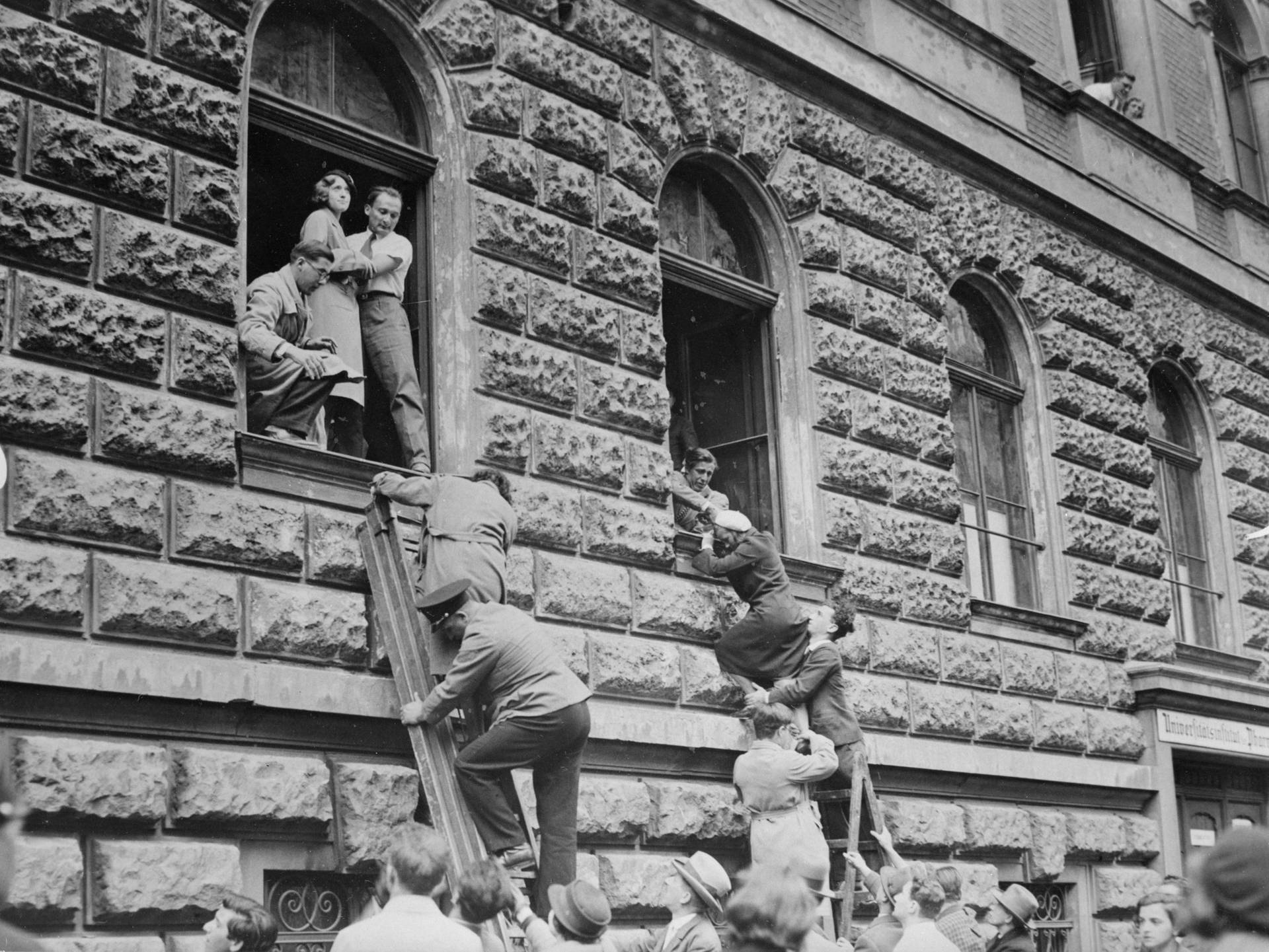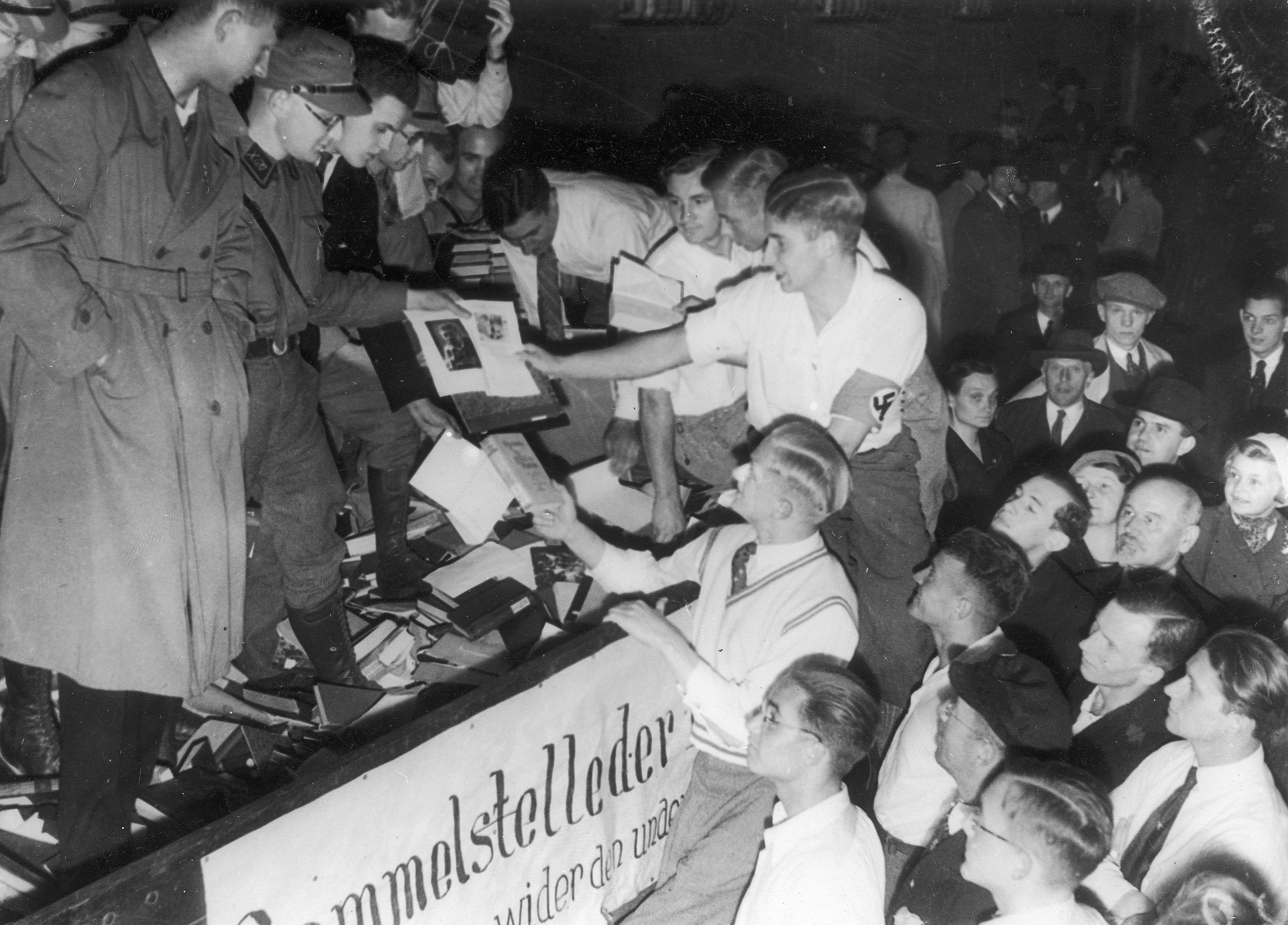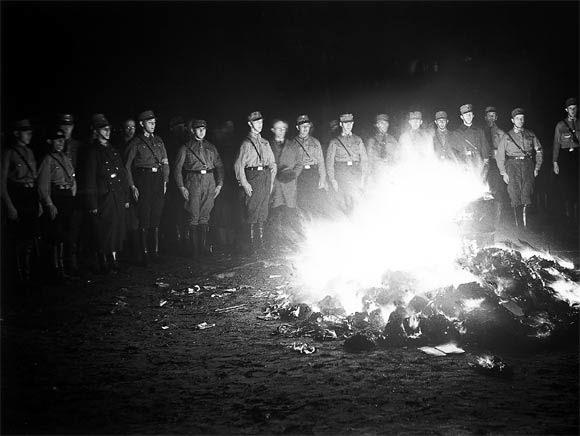
Nazi students storming the Anatomical Institute at the
University of Vienna, May 9th, 1933. The Institute was run by the Social Democratic Jewish
physician, Julius Tandler, who specialized in family planning.
Source: Alamy

The modern paradigm of Jewish academic persecution was established in Nazi Germany. Although German universities had a longstanding tradition of erecting barriers to Jewish students and faculty, the antisemitic discrimination that came with the rise of Nazism was unprecedented. Already in the late 1920s and early 1930s, radical members of the National Socialist German Students League had agitated against Jewish students and faculty at universities in cities such as Berlin, Munich, and Heidelberg, disrupting courses taught by Jewish professors, launching physical attacks against Jewish students - sometimes with cattle whips - and demanding the creation of courses on Nazi "racial science." At times, the attacks swelled into outright riots that led to the suspension of classes and prompted the temporary closure of the universities.

Nazi stormtroopers and students loading banned books for ceremonial
book burning at the Opernplatz in Berlin, May 10th, 1933.
Source: Wikimedia Commons
On April 25th, 1933, the Nazi regime proclaimed the "Law against Overcrowding in Schools and Institutions of Higher Education," which limited the number of "non-Aryan" students on campuses to 1.5% of the student population. (Jews were less than 1% of the German population but were 10% of Prussian university students.) On May 10th, 1933, Nazi Propaganda Minister Joseph Goebbels announced that the "age of exaggerated Jewish intellectualism" was over and, together with the National Socialist German Students League, organized a national book burning "action," in which the works of Jewish and leftwing writers, such as Sigmund Freud, Karl Marx, and Heinrich Heine, were consigned to massive bonfires.

In the years that followed, further persecutions were launched against Jewish professors who were initially exempted from firings (such as war veterans, mixed race scholars, and non-Jews married to Jewish spouses), and by 1938, all Jewish professors had been purged from German universities. The wave of repression, which eliminated nearly 20% of Germany's total university teaching staff, starkly confirmed how the Nazis transformed Germany from a land of "poets and thinkers" (Dichter und Denker) into a land of "judges and hangmen" (Richter und Henker).
Nazi book burning, 1933.
Source: Wikimedia Commons